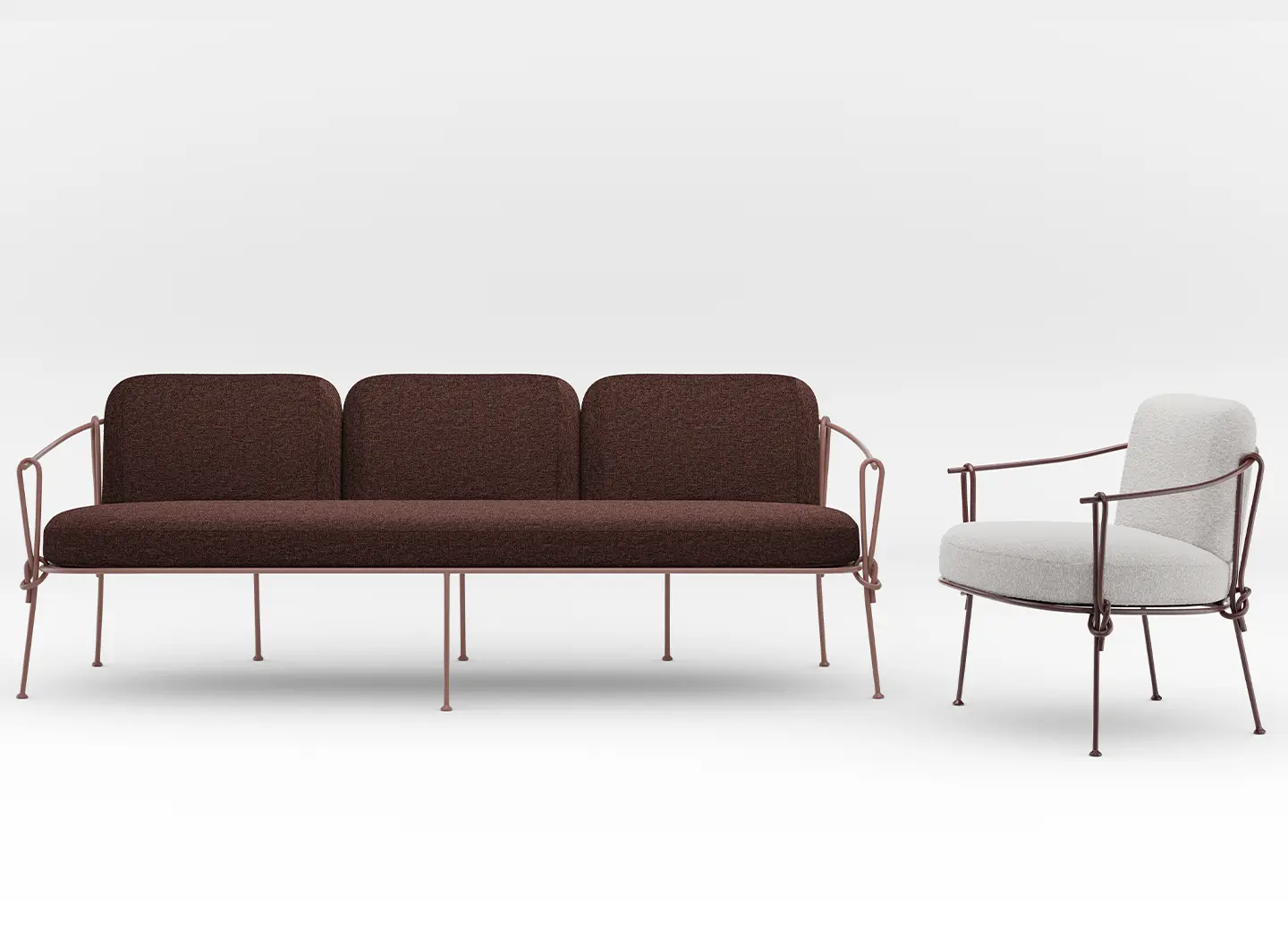Pure volumes, minimal or non-existent decoration, primacy of functionality, harnessing new materials: from the Casa del Fascio in Como to the railway station in Florence, the story of an experimental period that, after almost a century and several attempts at damnatio memoriae, remains a tangible presence in Italy.
Italian designers to the fore at the Salone del Mobile.Milano 2024

Potocco, Double L Glaze, design by Chiara Andreatti
The new generation of Italian design left its mark in the catalogues of the brands during the event. A roundup of projects featuring the faces, predilections and outlooks of this tireless generation
The weight of the great Masters is often invoked when it comes to the legacy, at times burdensome, of historical design in the Bel Paese. A very elevated design, which due to too much genius threatens, alas!, to crush more than one generation, obscuring its merits. And yet we are gradually beginning to work free from this admired burden. For the generation of designers born in around the eighties, it is time above all to (re)take the stage, without complexes. By inheriting from the tradition the all-Italian ability to dialogue with industry in the best possible way. And demonstrating that they are capable of keeping abreast of international sensibilities, as well as expressing a personal vision of what furniture and product design is today. To see what they are doing, where they are working, and the styles they are engaging with, we here present a survey of products developed by these designers and presented at the last Salone del Mobile.Milano.
Seating, the essentials
Chairs, it is often said, are the litmus test of design. In this new project that Federica Biasi has designed for Pianca, she reveals her ability to present contemporary reinterpretations that adapt to the needs of a broad cross-section of the public. As an exercise in style on the chair of the thirties, the Lina chair epitomizes virtue while disdaining flashiness. This is thanks to its harmonious lines, ergonomic imprinting, and a hint of dynamism given by the downward-grooved and flared legs.
The Dione chair, a new collaboration between David Lorenzo Dolcini and Porada, looks to the nobility of the classic, but glows with the light of a timeless sign. In the shape of a tub chair, it has a structure in solid black walnut, with lines designed not so much to stand out as to enhance the beauty of the workmanship and the tactility of the material.
With Nanda, the latest offering from UnoPiù, Gio Tirotto displays his skill in revisiting firmly established models in the outdoor sector with original flair. Restrained without being minimalist, this stackable outdoor armchair evokes the spacious form of a bergère by its graphite-colored galvanized steel profile, with a nod to the deckchair for the form of the fabric in an incisive brick red.
In a cultural mingling, the Kasumi armchair, by the Mist-O duo - Tommaso Nani and Noa Ikeuchi, based in Milan and Tokyo - speaks a little of Japan while its volumes look to the West. Produced by Living Divani, it has a wooden frame and comfortable upholstery that is an invitation to relax.
And because, when we talk about Italian designers, we have to include those who are “Italian at heart”, we need to mention the French designer Philippe Tabet, at home in Milan, and his Dunk for Et. al. A polypropylene tub chair (available in a 100% recyclable or recycled r-PP version, from the recovery of post-consumer material), by the markings on its shell Dunk subtly winks at the stitching of upholstered seats. Available both in the version with holes (stackable) or without, it appears in the catalogue with a wide range of colors and wooden or steel frames.
Unclassifiable Hybrids
Giuseppe Arezzi is sensitive to furniture’s multifunctional potential, as he has already shown with Binomio, the piece that launched him. In his first collaboration with Campeggi, Arezzi explores the theme of temporary hospitality and, in the same vein as Vico Magistretti’s famous Ospite, he imagines a folding day bed that closes to become a casual armchair.
The lucky star of coffee-tables
Both glass and coffee tables are on the crest of the wave. And the marriage between the two, especially in the colorful look that Chiara Andreatti gives to Double L Glaze, for the Potocco brand, proves especially apt. Note, as a distinctive sign, the presence of metal tie rods, which hold together the two curved panes of glass supporting the base.
Precision with grace
Zanellato Bortotto embodies his systemic vision in an integrated system of outdoor furniture for the Dante Negro brand, by playing on the appeal of hand-crafted metal rods. Consisting of a round gazebo, to which are added chairs, tables, sofa and armchair, the Corda collection enhances the lightness of the handling, particularly suitable for use on terraces and gardens, and makes the knot, a virtuous emblem of the workmanship, the symbol of the collection.
The same structural outlook resonates in the meticulous approach by Studio Klass, here applied to the integrated Arial boiserie system launched for Molteni&C. The style is the invariable contemporary classic that distinguishes the brand, combined with the flexibility of its arrangement in space, the accessories with great care lavished on the details and the built-in retractable doors.
Storage systems, of all kinds
When it comes to bookcases, this year’s offerings have produced some original results. Etna, designed by Martinelli Venezia for Lithea, is both a modular storage system with a light design that seamlessly integrates books and shelves for objects, eliminating the summary effect that often weighs on this model of furnishing. There is also a tribute to a region, Sicily, through the use of lava stone, one of its outstanding materials.
Voids and solids articulate the Halfsquare storage system that Giacomo Moor designed for Living Divani. A series of square-based drawers inserted in a metal structure follow one another with spaces left open to accommodate objects on display, or simply to give it a clearer and airier form.
Kitchens for socializing
In today’s kitchen, organization and ergonomics are integrated into a living space that is sociable and multifunctional. With Stilo, Spalvieri & Del Ciotto have created this concept for Scavolini with great care paid to the detailing, expressed in a precise formal choice: the identification of the cylinder as the distinctive hallmark of the system both horizontally and vertically.
The furnishing accessory, without prejudice
Valerio Sommella, one of the most distinctly industrial designers of this generation, here explores a surface that is new to him: wallpaper. With Flower jungle, developed for the Londonart brand, his approach eludes the customary. Rejecting a distinctly realistic code, he designs the floral patterns like an Impressionist, favoring subtlety to render the effect of movement.
We close this overview with Guglielmo Poletti, who with Magis tackles a typology that has always been a field for experimentation in the brand: the mirror, and with a tactile material increasingly in vogue, ceramic, here used for the frame with an architectural trait thanks to the shell transformed into a practical shelf.

























